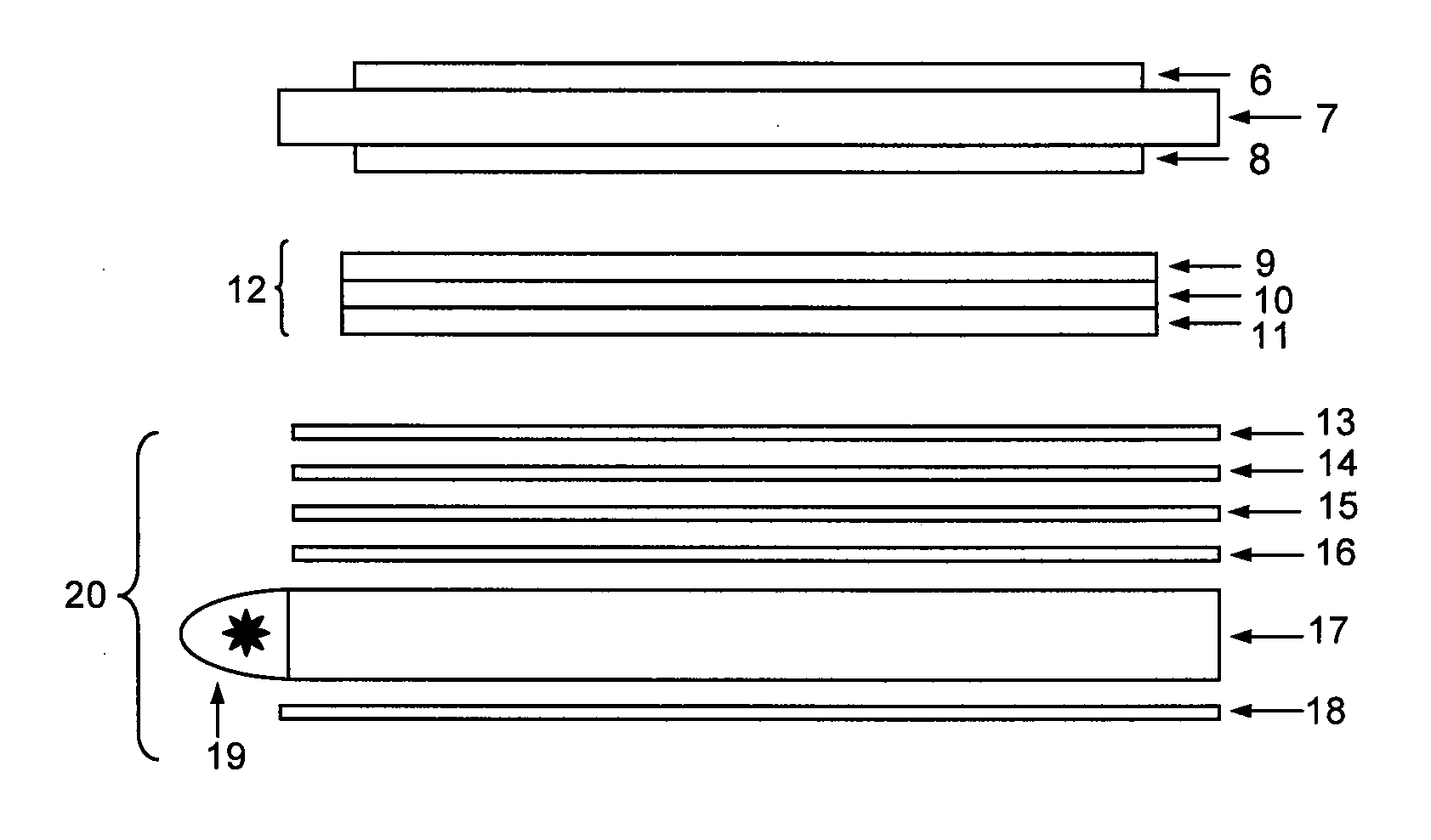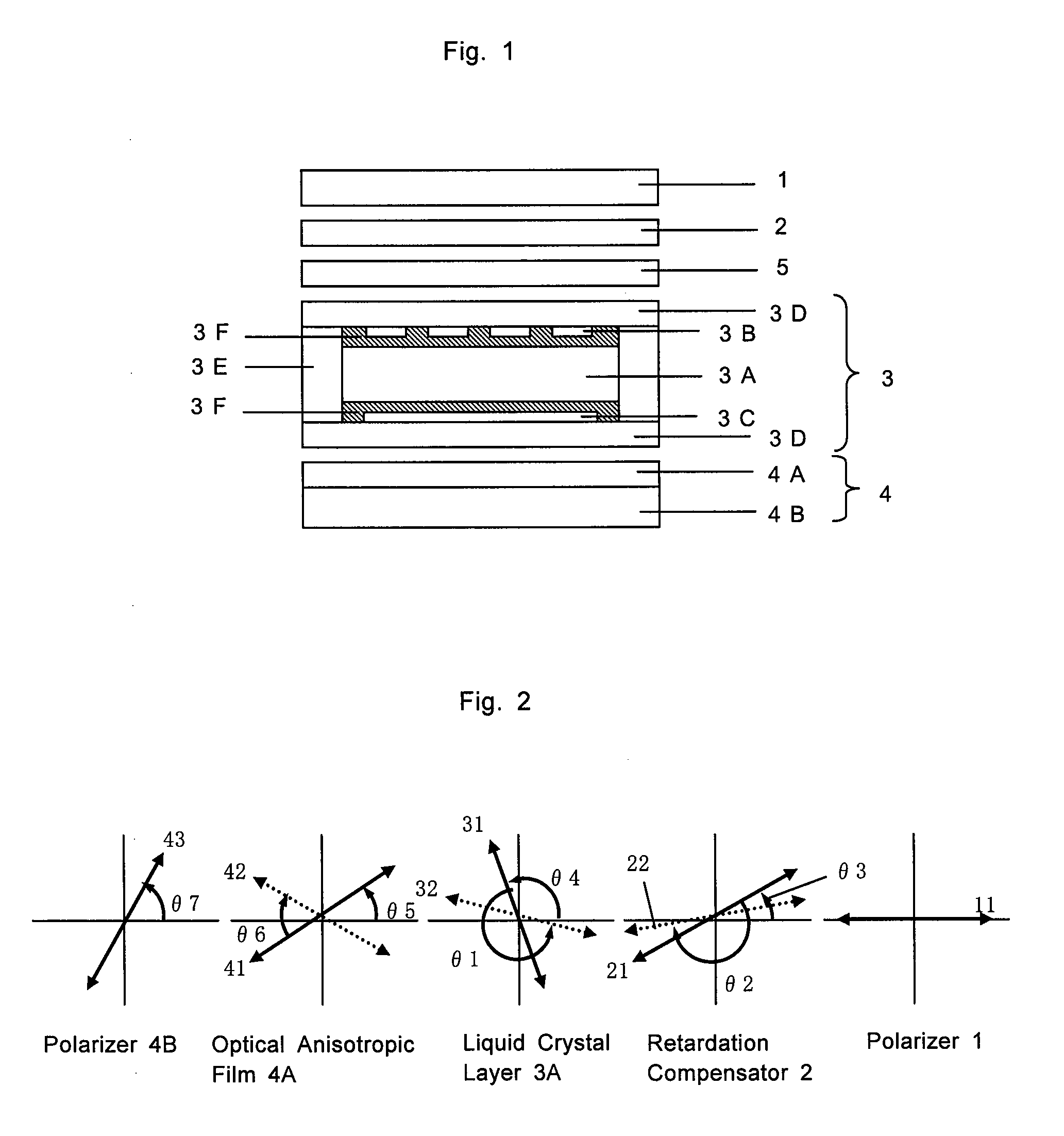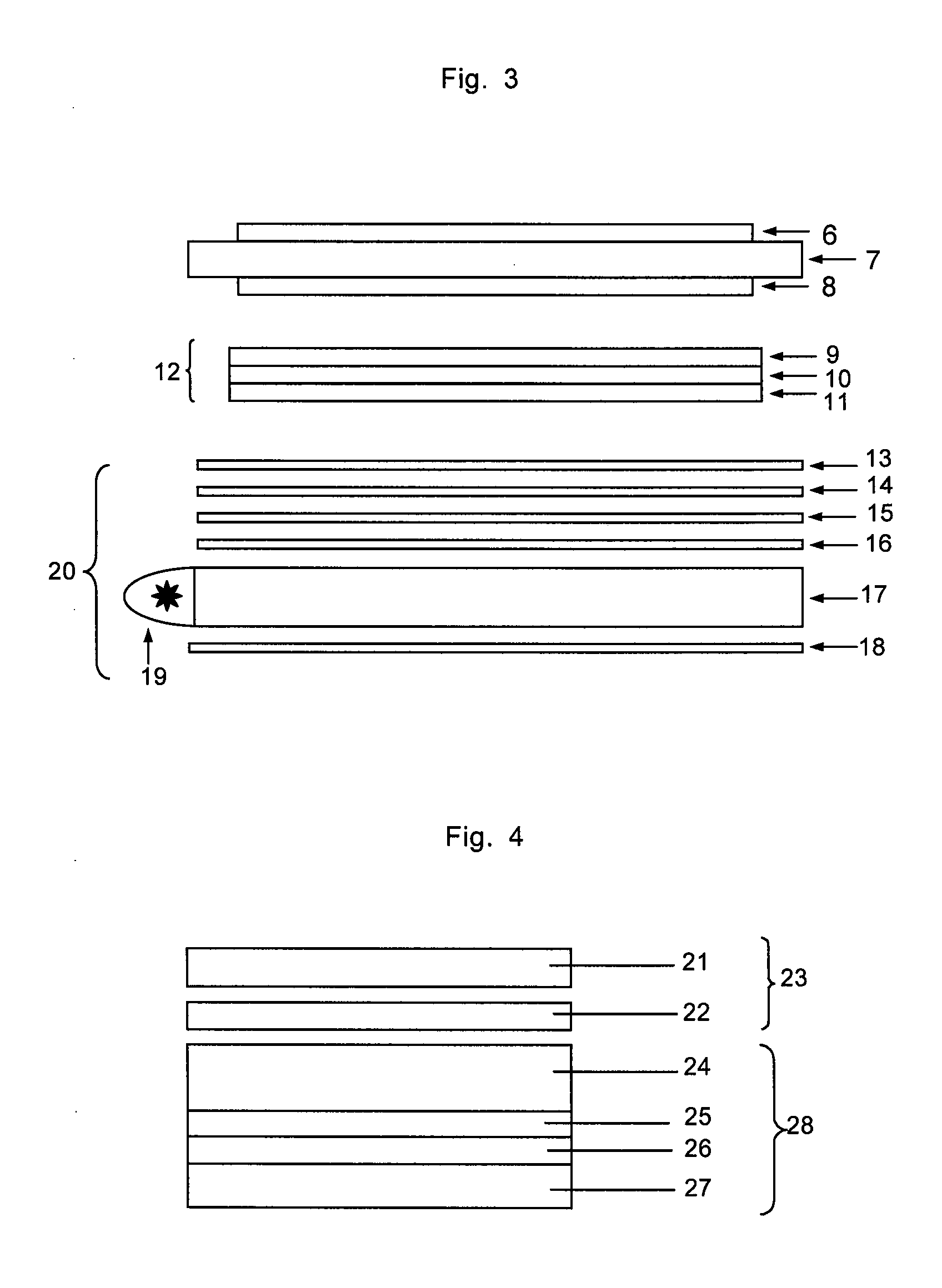Circular Polarizer, Process for Producing the Same, Optical Film, Liquid Crystal Display Device and Electroluminescence Device
a technology of circular polarizers and polarizing elements, applied in the direction of polarising elements, instruments, electroluminescent devices, etc., can solve the problems of increasing the thickness of the resulting liquid crystal panel, too low living contrast to be used as a light source for a display device, and poor productivity, so as to reduce the number of layers of the circular polarizer, reduce the number of layers, and reduce the effect of shrinkage strain on each layer
- Summary
- Abstract
- Description
- Claims
- Application Information
AI Technical Summary
Benefits of technology
Problems solved by technology
Method used
Image
Examples
reference example 1
[0118] Among optical retardation films (twisted optical retardation films) with twisted structures each having a twisted angle and a retardation as parameters, films having such parameters that they can function as a circular polarizer in combination with a polarizer were sought. Since in a laminate composed of a polarizer, a twisted optical retardation film, and a mirror, the rotation direction of a circularly polarized light is reversed when it is reflected at the mirror surface, the reflectance of a light made incident vertically to the mirror from the polarizer side is ideally zero. Using this principle, in a laminate comprised of a polarizer, a twisted optical retardation film, and a mirror, the combinations of parameters such as the absorption axis direction of the polarizer and the twisted angle and retardation of the optical retardation film are calculated with an extended Jones matrix method. From the results of the calculation, the reflectance was evaluated with “Y” value ...
example 1
Preparation of Polymer Solution A
[0122] A polymerization was carried out using 50 mmole of terephthalic acid, 50 mmole of 2,6-naphthalene dicarboxylic acid, 40 mmole of methylhydroquinone diacetate, 60 mmole of catechol diacetate, and 60 mg of N-methylimidazole under a nitrogen atmosphere at a temperature of 270° C. for 12 hours. The resulting reaction product was dissolved in tetrachloroethane and then purified by reprecipitating with methanol thereby obtaining 14.7 g of a liquid crystalline polyester. It was found that this liquid crystalline polyester (polymer 1) had an inherent viscosity of 0.17 (dl / g), a nematic liquid crystalline phase, an isotropic phase-liquid crystalline phase transition temperature of 250° C. or higher, and a glass transition temperature of 115° C.
[0123] In dichloromethane, 90 mmol of biphenyldicarbonylchloride, 10 mmol of terephthaloylchloride, 105 mmol of S-2-methyl-1,4-butanediol were reacted at room temperature for 20 hours, and the reaction solution...
example 2
[0127] A transflective STN liquid crystal display with a structure as shown in FIG. 1 was produced using the circular polarizer produced in Example 1. In this example, the experiments were conducted using a liquid crystal cell wherein the counterclockwise direction from the polarizer 1 to the liquid crystal cell 3 was defined as “+”, while the clockwise direction was defined as “−”. However, the same results were obtained using a liquid crystal cell wherein the counterclockwise direction was defined as “−”, while the clockwise direction was defined as “+”.
[0128] As shown in FIG. 1, a liquid crystal cell 3 is provided with a pair of substrates 3D facing each other, an upper electrode 3B formed on the lower surface of the upper substrate, a transflective electrode 3C formed on the upper surface of the lower substrate, and alignment layers 3F printed on each electrode and having been subjected to an alignment treatment. A liquid crystal layer 3A was formed by injecting a liquid crysta...
PUM
| Property | Measurement | Unit |
|---|---|---|
| thickness | aaaaa | aaaaa |
| thickness | aaaaa | aaaaa |
| thickness | aaaaa | aaaaa |
Abstract
Description
Claims
Application Information
 Login to View More
Login to View More - R&D
- Intellectual Property
- Life Sciences
- Materials
- Tech Scout
- Unparalleled Data Quality
- Higher Quality Content
- 60% Fewer Hallucinations
Browse by: Latest US Patents, China's latest patents, Technical Efficacy Thesaurus, Application Domain, Technology Topic, Popular Technical Reports.
© 2025 PatSnap. All rights reserved.Legal|Privacy policy|Modern Slavery Act Transparency Statement|Sitemap|About US| Contact US: help@patsnap.com



